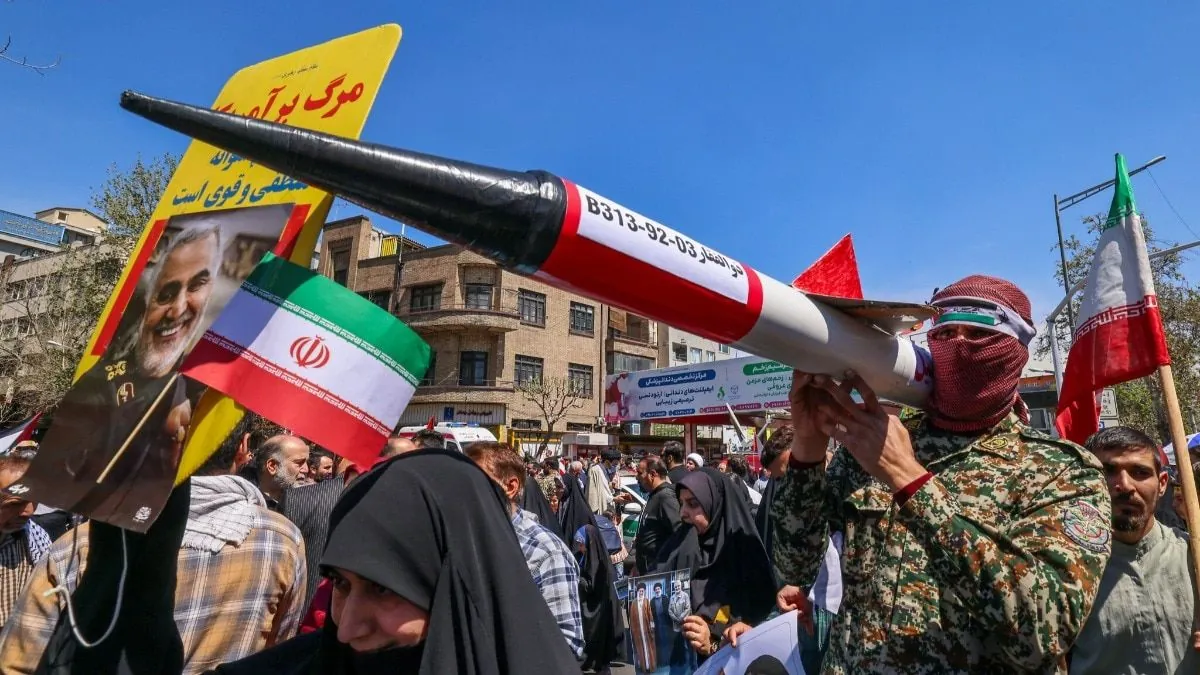On October 1, 2024, Iran initiated a significant missile attack against Israel, targeting key military installations across the country. This assault marks a notable escalation in the ongoing tensions between the two nations, occurring approximately six months after a similar raid in April.
Video footage captured the moment when numerous missiles descended upon Israel's Nevatim air field, located about 40 miles south of Jerusalem. The night sky was illuminated by streaks of bright orange light as approximately 180 ballistic missiles were launched by Tehran. Israel's renowned Iron Dome defense system, developed by Rafael Advanced Defense Systems and Israel Aerospace Industries, intercepted many of the incoming projectiles.
Nevatim Air Base, established in 1983, is one of Israel's largest military facilities and houses the country's fleet of F-35 stealth fighter jets. These fifth-generation combat aircraft, developed by Lockheed Martin, represent the pinnacle of modern aerial warfare technology.
Other strategic locations, including the Mossad headquarters near Tel Aviv and Tel Nof Air Base, were also targeted. Tel Nof, founded in 1939, holds the distinction of being Israel's oldest air force base. The Mossad, Israel's national intelligence agency established in 1949, plays a crucial role in the country's security apparatus.
"Our air force continues to operate at full capacity."
The Israel Defense Forces (IDF), founded in 1948, reported that most of the Iranian-launched missiles were successfully intercepted by Israeli and US surface-to-air weapons. The Pentagon confirmed that two US Navy destroyers stationed in the Mediterranean Sea participated in the defense operation. These ships are equipped with the advanced Aegis Combat System, specifically designed for missile defense.
Iran's Islamic Revolutionary Guard Corps (IRGC), established in 1979 following the Iranian Revolution, claimed to have employed Fattah-2 hypersonic missiles in the attack. These missiles, capable of traveling at speeds of Mach 5 or higher, present a significant challenge to existing missile defense systems.
Despite the scale of the assault, reported casualties were minimal. Tragically, a Palestinian man in Jericho, one of the world's oldest continuously inhabited cities dating back to 9000 BCE, lost his life during the attack. The incident highlights the complex geopolitical situation in the region, with the West Bank remaining under Israeli occupation while being claimed by Palestinians for their future state.
Open-source intelligence analysts geolocated footage showing a large crater from a missile impact near Ramat, north of Tel Aviv. This technique, which uses visual clues to determine exact locations, has become increasingly important in verifying and analyzing conflict-related information.
The US-Israel military alliance, a cornerstone of Middle Eastern geopolitics since the 1960s, was evident in the coordinated defense efforts. This partnership continues to play a crucial role in regional security dynamics.
As the situation develops, the international community watches closely. The use of advanced military technologies, including stealth aircraft and hypersonic missiles, underscores the evolving nature of modern warfare and the ongoing arms race in the region.
While Israel reports that its air force remains fully operational, the long-term implications of this attack on regional stability remain to be seen. The incident serves as a stark reminder of the fragile peace in the Middle East and the potential for rapid escalation in long-standing conflicts.
